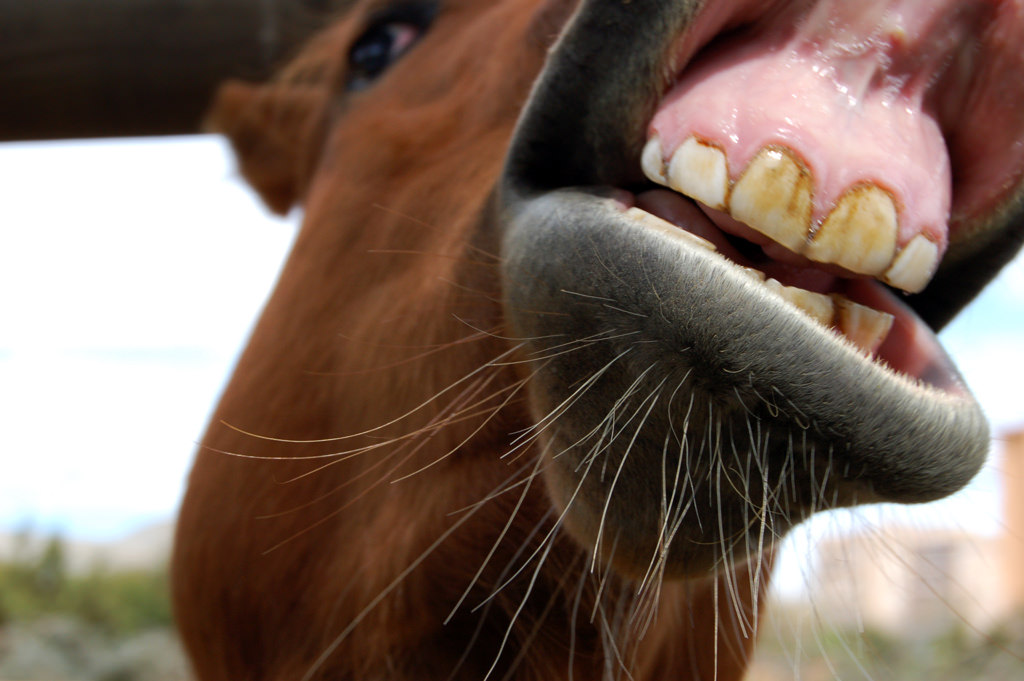
A: Because horses’ teeth continue to erupt throughout their lives, it is somewhat possible to estimate their age using a handful of indicators. Aging is more accurate from birth until about the age of five years because deciduous or “baby” teeth are being replaced by permanent teeth through this time frame. After that, veterinarians use indicators such as the appearance/disappearance of “cups,” the dental “star,” and the enamel ring in the lower incisors, as well as Galvayne’s Groove and presence/absence of a hook on the upper corner incisor. Even the angle of the upper and lower incisors provides information.
From the sixth edition of Guide for Determining the Age of the Horse published by the American Association of Equine Practitioners:
Teeth erupt, wear, are shed, and appear to change shape with reasonable regularity…However age determination is not an exact science as a multitude of factors can influence the appearance of an individual mouth. Factors such as nature and quality of feed, environmental conditions, breed, heredity, injury and disease can influence teeth and affect wear.”
Ask your veterinarian to show you these indicators the next time he or she is performing an oral exam on your horse in case you want more information on determining your horse’s age through his teeth. In the meantime, here is the eruption schedule for deciduous and permanent teeth in the horse:
| DECIDUOUS | |
1st (central) incisor | birth or first week “6 days” |
| 2nd (middle) incisor | 4-6 weeks “6 weeks” |
3rd (corner) incisor | 6-9 months “6 months” |
The first three cheek teeth on the top and bottom (premolars 2, 3, and 4) all come in at birth or within the first two weeks.
| PERMANENT | |
| 1st incisor | 2 ½ years |
| 2nd incisor | 3 ½ years |
| 3rd incisor | 4 ½ years |
The first permanent premolar (aka “wolf tooth”) appears when the horse is 5 – 6 months old, if at all, with the rest of the permanent premolars and molars all appearing by 4 years of age.
Not surprisingly, it is the very things that make it possible to estimate the age of a horse that are also responsible for the most common problems in the mouth. Sharp cheek teeth (as a result of constant growth) and retained deciduous teeth or “caps,” are two issues that veterinarians routinely find when examining a horse’s mouth. Additional problems include excessively worn or abnormally long teeth; loose, lost, or fractured teeth; infected teeth or gums; and hooks, ramps, steps, or waves (referring to the shape of the cheek teeth arcade). While it is possible for horses to develop cavities, their tooth structure, diet, and eating frequency are a few of the reasons cavities are seen less frequently than in other species.





